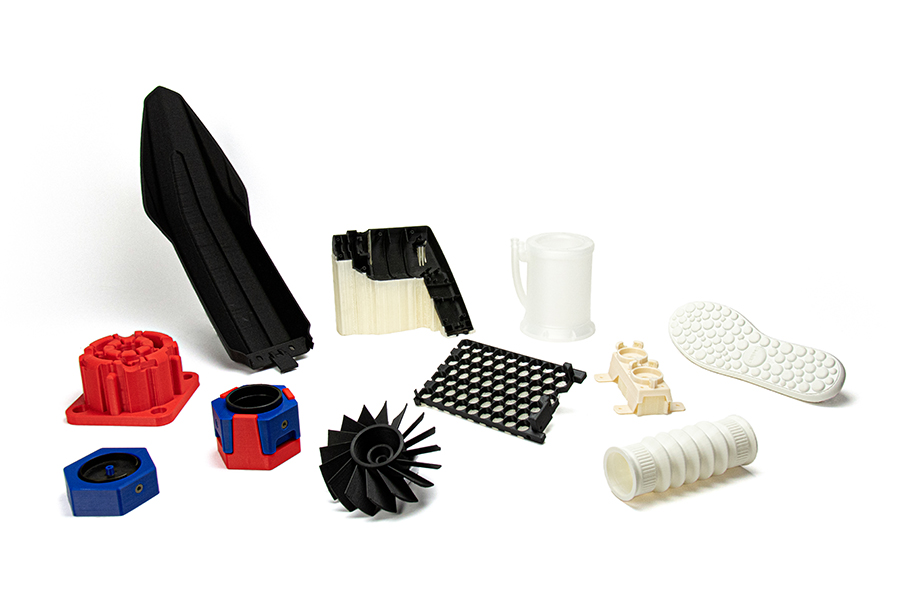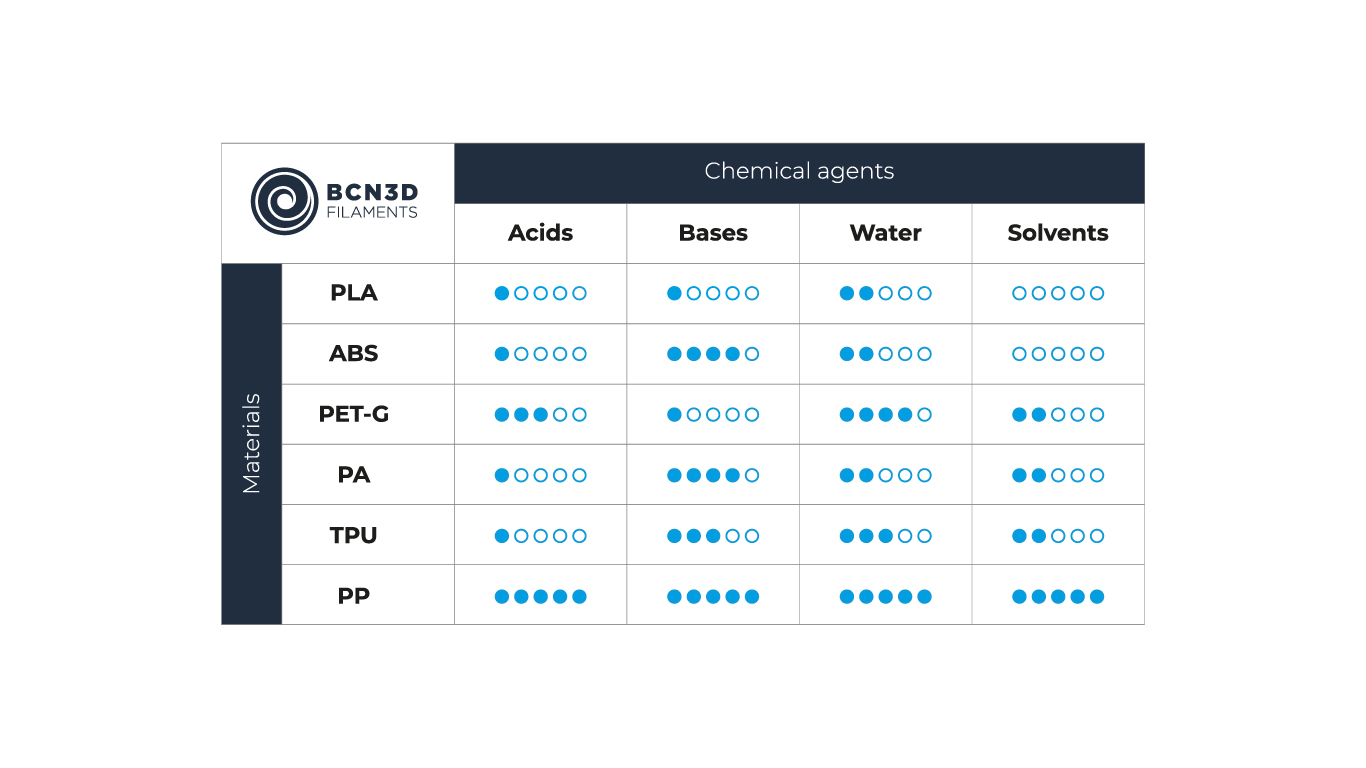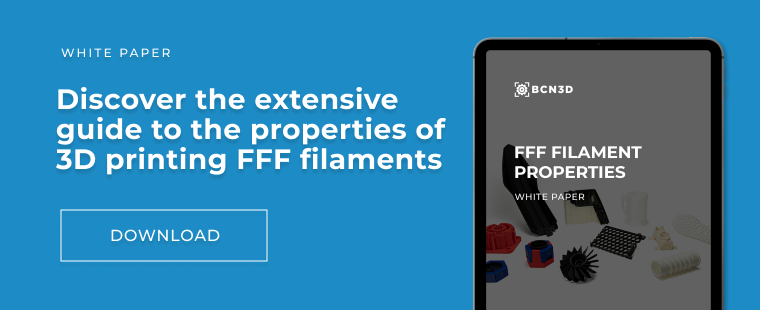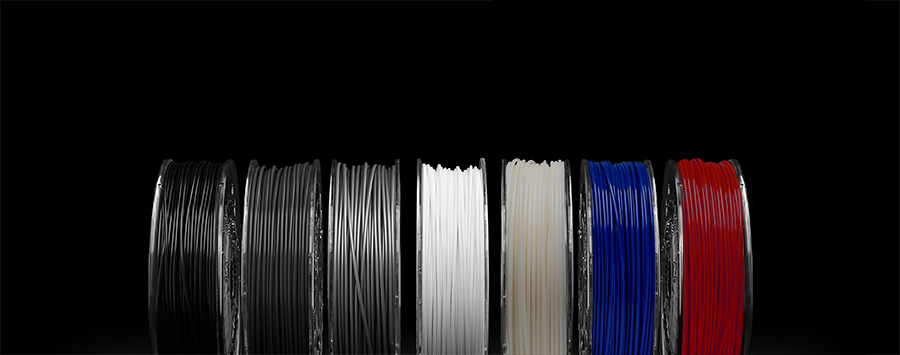Discover the extensive guide to the properties of 3D printing FFF filaments
This white paper dives deep into physico-mechanical printing properties and impact, heat and water resistances, by evaluating the performance of every material in the BCN3D portfolio.

The process of a 3D print begins long before we press the start button. When applications range from anything from food packaging to industrial machinery, it is important to pick our materials according to their physico-mechanical properties, and whether or not impact resistance, heat resistance or chemical resistance are required.
The physico-mechanical properties you need to know
Materials can be categorized from their stress vs. strain curve. A rigid and brittle material, such as PLA, will strongly resist deformation (red curve). A technical material, such as ABS, is tough i.e. less prone to abrupt fracture (green curve). A semi-flexible material, such as PA, shows an initial degree of rigidity at low strains and is capable of enduring a considerable deformation before failing (blue curve). Elastomeric materials, such as TPU 98A, are characterized by a low Young’s modulus, making them soft and pliable, but also resistant to great deformations and impacts (purple curve).
Regarding ultimate tensile strength, all materials except PP are higher than 25 MPa, which makes them suitable for structural parts. The strongest materials in our portfolio are PLA and PAHT CF15.
The following elongation at break graph highlights the outstanding elastomeric behaviour of TPU 98A. PA and PP behave as semi-flexible materials, and PET-G is notable for its good elongation of 23%, which gives it an overall better mechanical profile in comparison with PLA. Composite filaments PAHT CF15 and PP GF30 are characterized by a low elongation at break, due to the stiffness contributed by the added fibers.
For stiffness, the composite filaments perform the best: PAHT CF15, with a modulus of 5.1 GPa, and PP GF30 with 2.6 GPa. Carbon and glass fiber ensure a high dimensional stability, preventing the polymeric chains from sliding over each other and thus reducing the plasticity of the blend.
Full force
This graph shows the impact energy of BCN3D Filaments, expressed in KJ/m2. What immediately stands out is the great impact energy of PA, which is due to its flexibility and semi-crystalline nature. However, PA is not rigid, and for applications where a combination of stiffness and toughness is required, ABS is the ideal candidate.
Turning up the heat
Here we can see the heat deflection temperature of BCN3D’s filaments. PP GF30 and PAHT can be exposed to the most extreme temperatures of above 100ºC. ABS and PA are suitable for intermediate conditions, while our basic filaments cannot be exposed to hot environments.
Corrosive chemicals
Of course, corrosive chemicals and even water can do a lot of damage.
- For acid resistance, look to PP and PP GF30.
- For base resistance, PP and PP GF30 work best.
- PP, PP GF30 and PET-G are water-resistant
- And against organic solvents we recommend PP and PP GF30.

Evaluating material printing properties should always be at the top of your list in the process of producing the perfect print!




